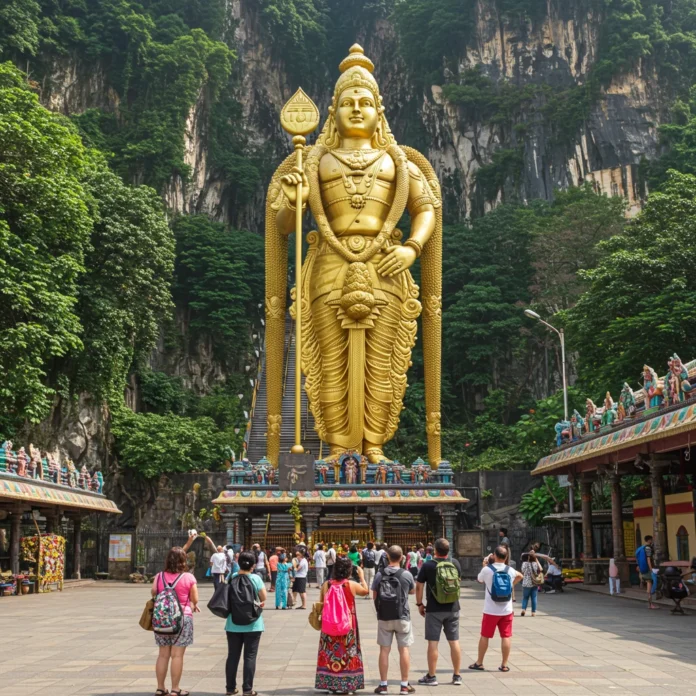What Should You Know About Batu Caves and Kuala Lumpur Cultural Private Tours?
For travelers seeking a deeper understanding of Kuala Lumpur’s cultural heritage, a visit to Batu Caves offers an unforgettable experience. These limestone caves, located just outside the city center, are home to vibrant Hindu temples, towering statues, and sacred rituals. A private tour allows us to immerse ourselves in the spiritual atmosphere, learn from knowledgeable guides, and enjoy the journey at our own pace.

With the sounds of chanting, the scent of incense, and the stunning sight of the golden Lord Murugan statue, Batu Caves promises a feast for the senses. Choosing a private tour ensures a tailored experience, making it easy to appreciate the site’s cultural richness and natural beauty.
Why Should You Choose a Private Tour to Visit Batu Caves?
Opting for a private tour to Batu Caves provides flexibility, personalized attention, and the ability to ask questions freely. We can explore the temples, interact with local guides, and set our own pace without the pressure of a large group. This approach is particularly beneficial for families, photographers, and anyone with specific interests.
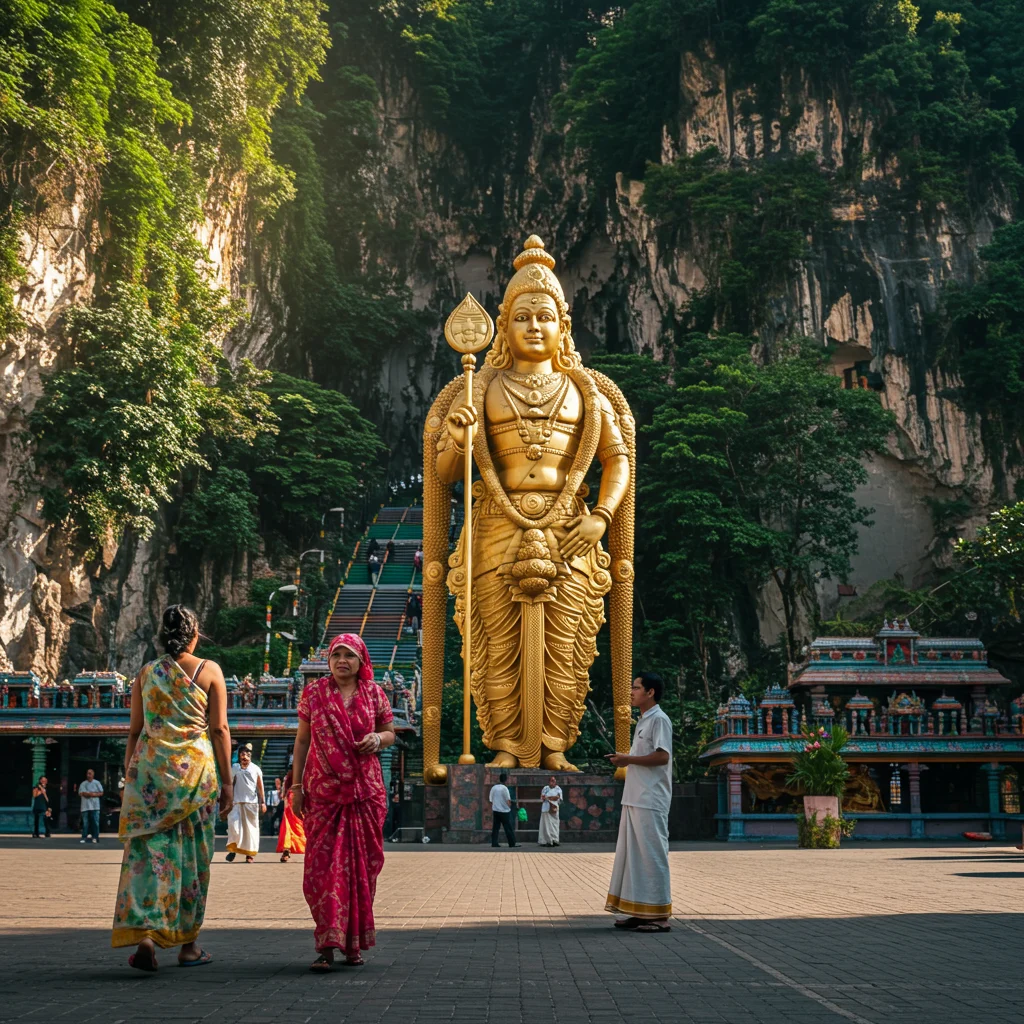
Private tours often include comfortable transportation, convenient pick-up and drop-off, and insightful commentary. We can also combine our visit with other attractions in Kuala Lumpur, ensuring a seamless and enriching day.
What Makes Batu Caves a Must-See Destination?
Batu Caves stands out as one of Malaysia’s most iconic landmarks, attracting visitors from around the world. The combination of natural limestone formations, vibrant temple art, and the spiritual energy of ongoing rituals creates a unique atmosphere. The dramatic 272-step staircase, painted in bright colors, leads us to the heart of the caves and offers panoramic views of the surrounding landscape.
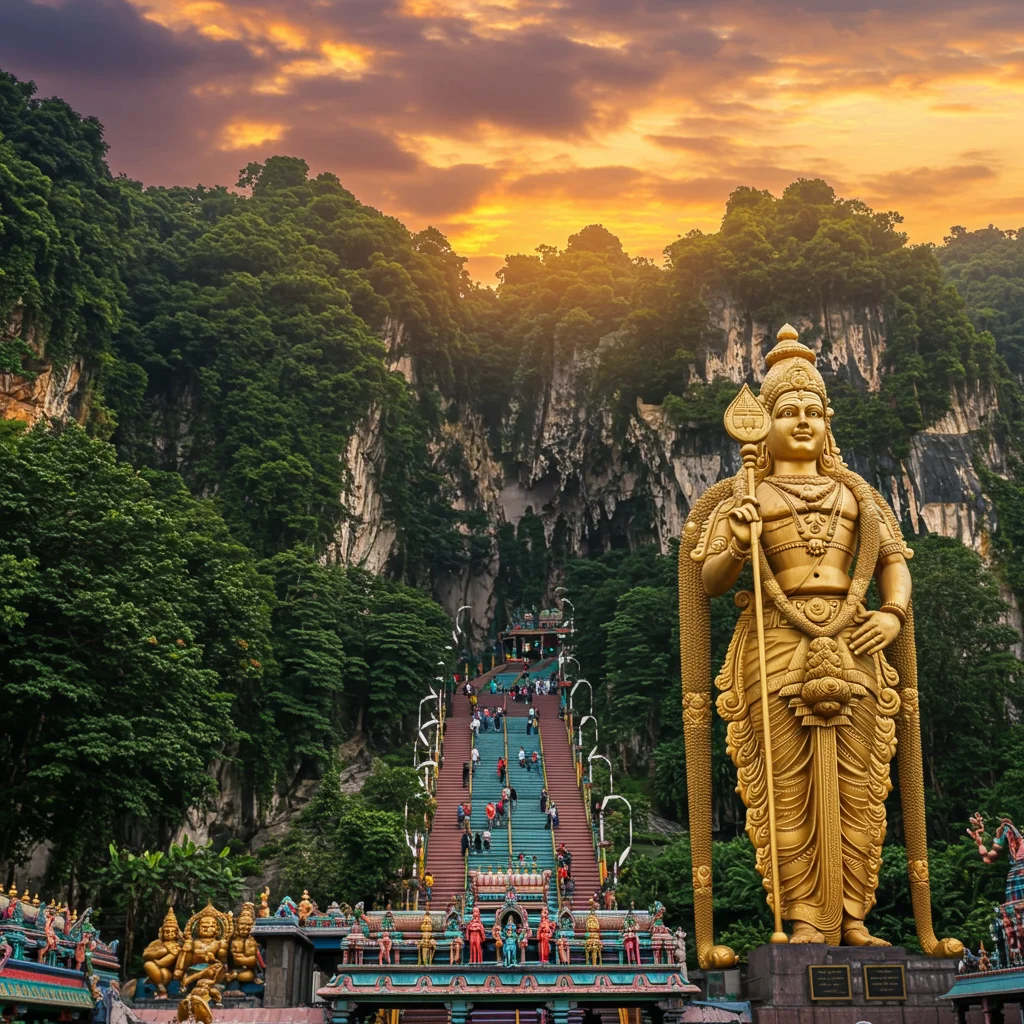
Whether we are interested in religion, history, or nature, Batu Caves delivers a compelling experience that ranks high on any list of KL adventures you’ll want on your bucket list.
How Did Batu Caves Become So Important?
The history of Batu Caves dates back millions of years, with the limestone hills believed to have formed around 400 million years ago. The caves themselves became a place of worship in the late 19th century, when Indian Tamil settlers dedicated them to Lord Murugan, a revered Hindu deity. Annual festivals and daily prayers have since transformed Batu Caves into a living center of faith and culture.
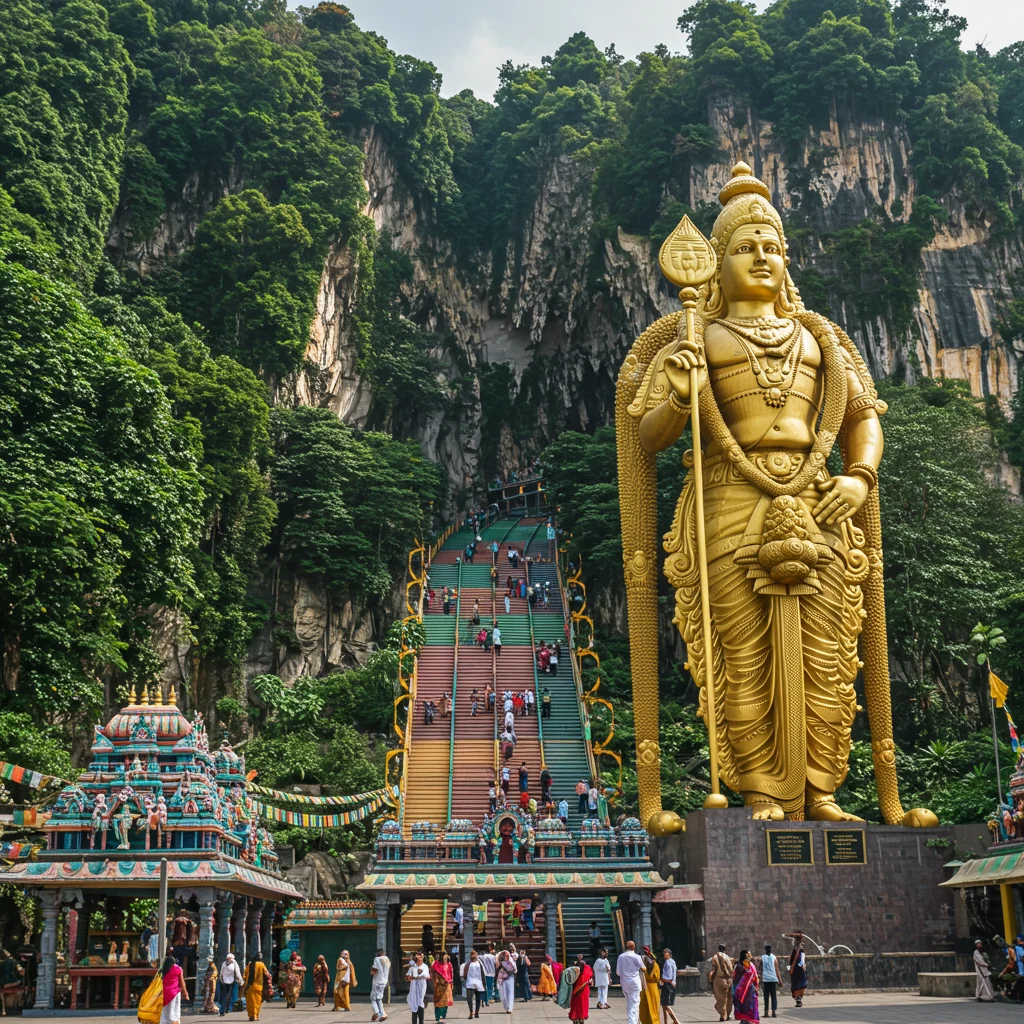
Over time, the site has grown in significance, hosting thousands of visitors during major celebrations and serving as a symbol of Malaysia’s multicultural identity.
Why Are Batu Caves So Significant in Malaysian Culture?
Batu Caves serves as a focal point for the Hindu community in Malaysia and is especially prominent during Thaipusam, a festival that draws devotees in their thousands. The caves are not only a place of worship but also a venue for cultural exchange, artistic expression, and interfaith dialogue.

Visitors can witness intricate rituals, admire detailed murals, and appreciate the blend of spiritual devotion and community life that defines the site. The caves are a testament to the resilience and creativity of Malaysia’s diverse population.
How Can You Reach Batu Caves from Kuala Lumpur?
Reaching Batu Caves is straightforward, with several convenient options available. The KTM Komuter train runs directly from Kuala Lumpur Sentral station to Batu Caves station, making public transport a popular choice. Alternatively, taxis and ride-hailing services offer door-to-door convenience, while private tours provide round-trip transfers as part of the package.
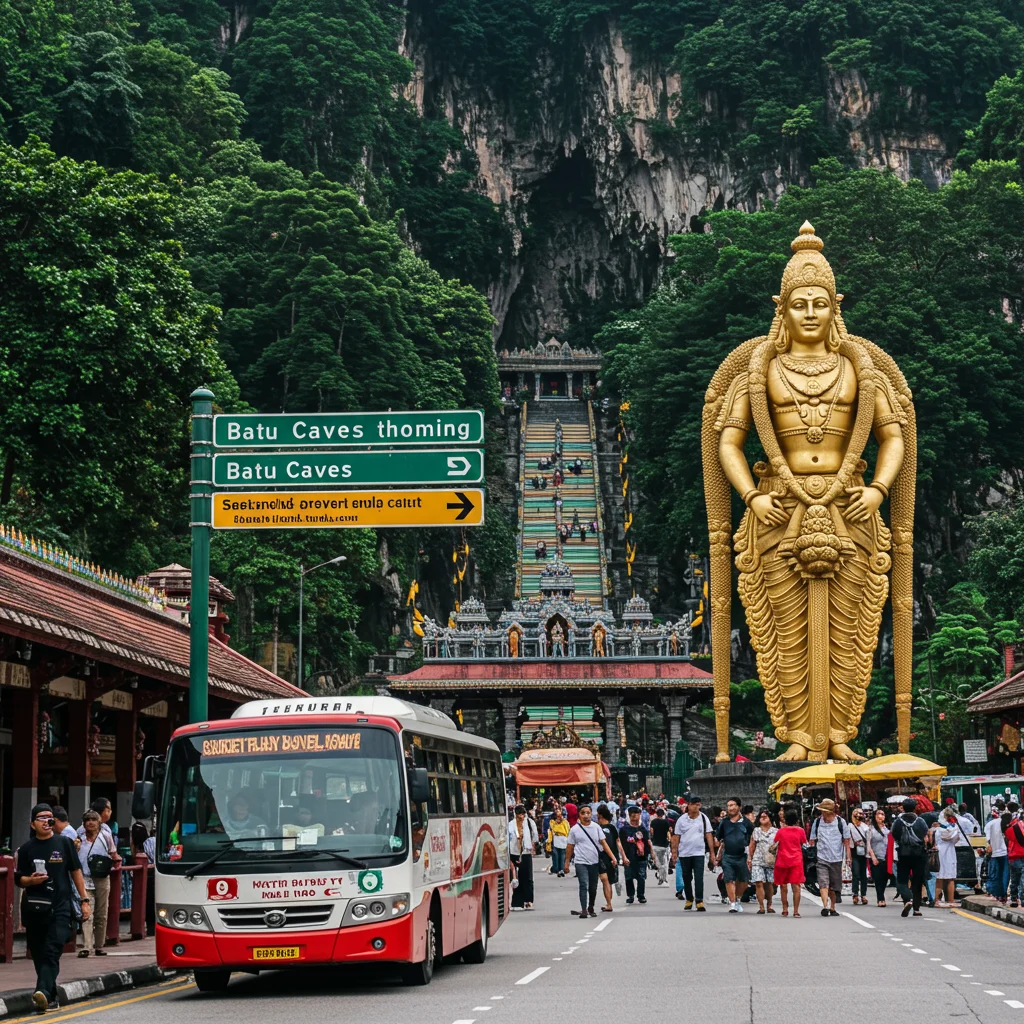
For those who prefer to drive, ample parking is available on-site. We recommend considering traffic conditions and planning your journey to avoid peak hours.
What Experiences Can You Expect on a Kuala Lumpur Cultural Private Tour?
A private cultural tour of Batu Caves typically includes guided exploration of the temple complex, insights into Hindu traditions, and plenty of opportunities for photography. Guides often share stories behind the shrines, explain the meaning of rituals, and answer questions about local customs.
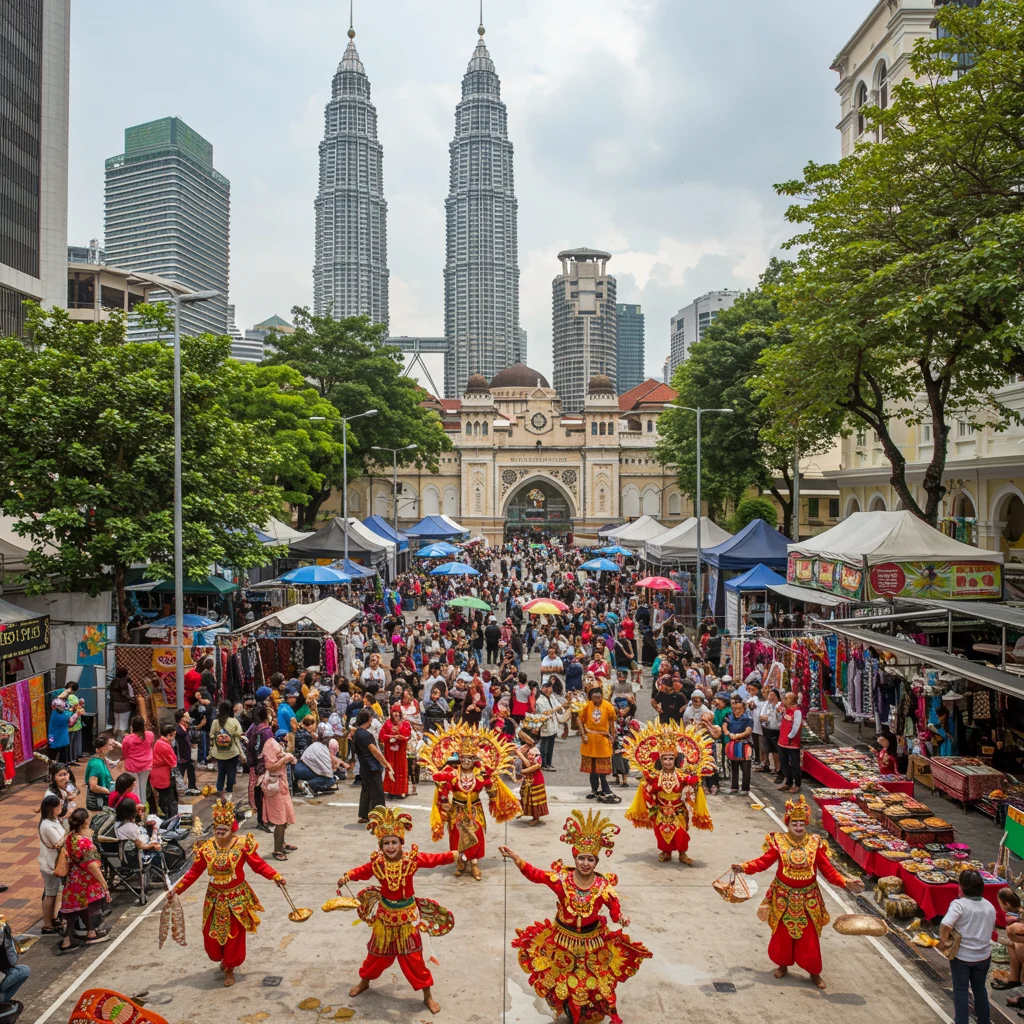
Many private tours also offer flexibility to visit other nearby attractions, sample local cuisine, or shop for souvenirs. The atmosphere is welcoming, with guides attuned to our interests and comfort level.
How Do You Select the Best Private Tour for Batu Caves?
When choosing a private tour, we should consider factors such as the guide’s expertise, transportation quality, tour duration, and included amenities. Some tours may focus on history, while others emphasize spiritual practices or nature walks. Reading reviews and comparing itineraries helps us find the perfect fit.

It’s also important to check if the tour includes entry fees, meal options, and hotel transfers. Clear communication with the provider ensures our expectations are met.
What Are the Advantages of Private Tours Over Group Tours?
Private tours offer several distinct benefits:
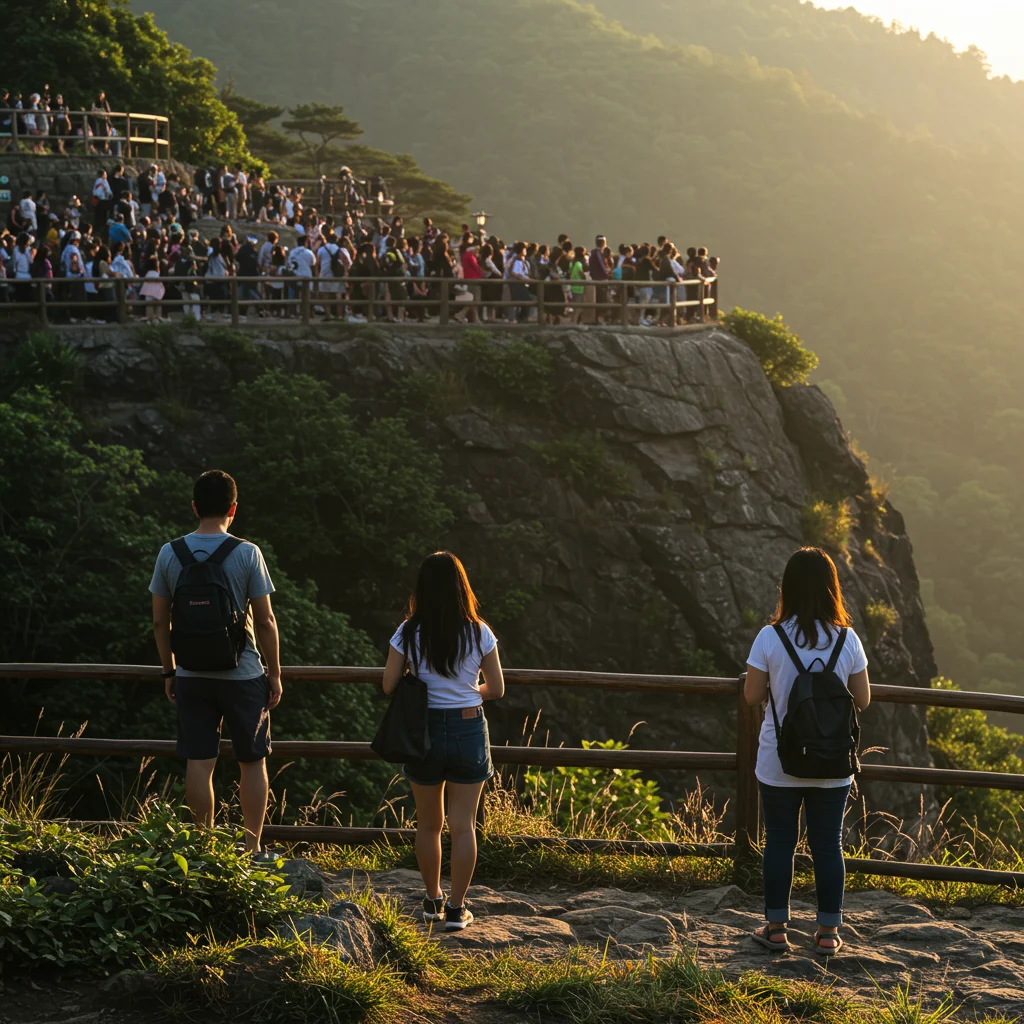
- Personalized attention from knowledgeable guides
- Flexible scheduling and pacing
- Tailored itineraries to suit our interests
- Comfortable, private transportation
- Greater privacy and less crowding
Compared to group tours, private experiences allow us to engage more deeply with the site and avoid the distractions of large crowds. We can ask detailed questions and enjoy a more relaxed, intimate atmosphere—much like the approach taken in other destinations, as seen in our feature on the Teotihuacan Private Tour.
What Should You Know About the Batu Caves Complex?
The Batu Caves complex features several distinct caves and temples, each with its own character and spiritual significance. The site is anchored by the iconic Lord Murugan statue and the colorful staircase, but there is much more to explore within the limestone hills.
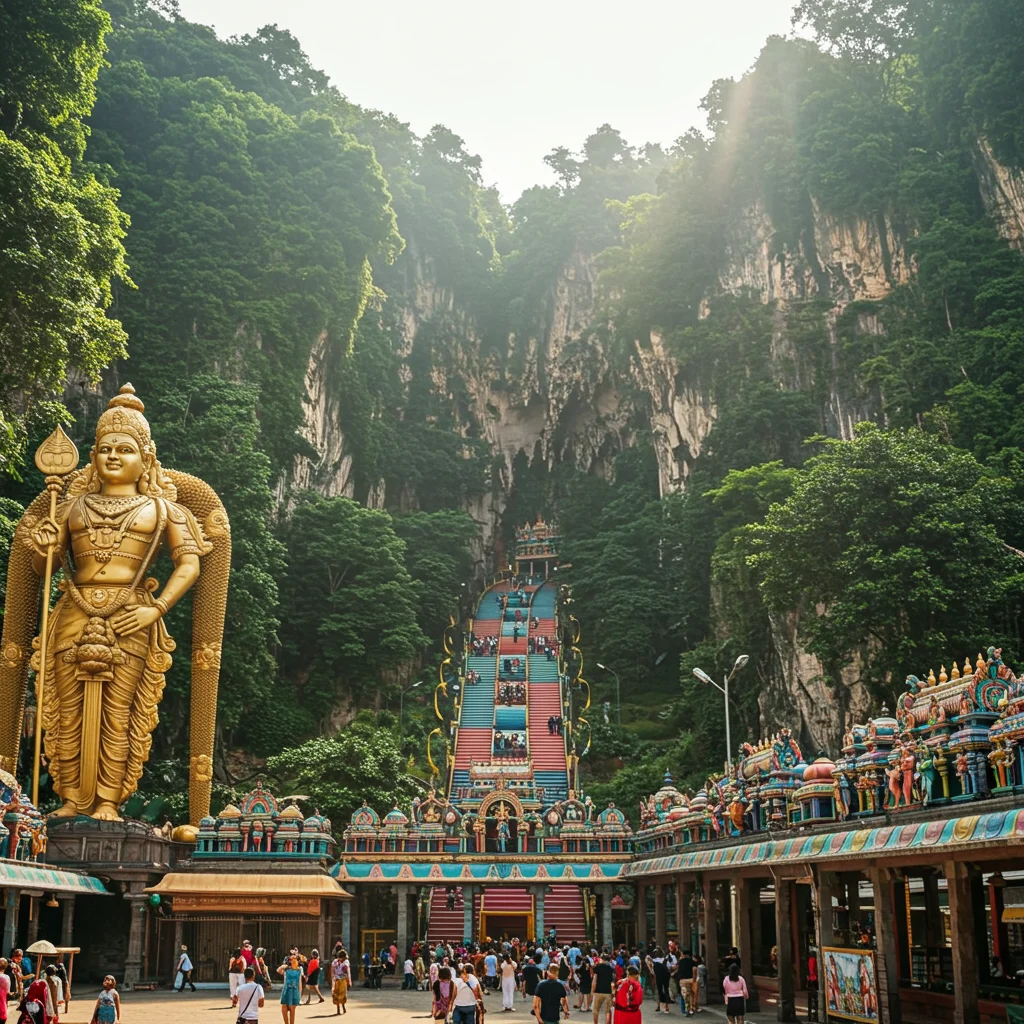
Let’s take a closer look at the main attractions within the complex.
What Are the Main Cave Temples and Their Meanings?
Each of the primary caves at Batu Caves offers a unique experience, blending religious symbolism with natural beauty.
What Is the Temple Cave (Cathedral Cave)?
The Temple Cave, also known as Cathedral Cave, is the largest and most significant chamber within Batu Caves. Its soaring ceiling and spacious interior house several ornate Hindu shrines dedicated to Lord Murugan and other deities. The natural light streaming through the cave’s opening creates a serene and awe-inspiring environment for prayer and reflection.
What Makes the Dark Cave Unique?
The Dark Cave is renowned for its ecological importance and unique geological formations. Guided tours take us through its pitch-black corridors, revealing rare species of spiders, bats, and insects. The cave’s environment is cool and damp, with the sound of dripping water and the subtle scent of earth creating a mysterious atmosphere. Conservation efforts protect the fragile ecosystem found here.
What Can You See in the Ramayana Cave?
The Ramayana Cave brings Hindu mythology to life with colorful murals depicting scenes from the Ramayana epic. As we walk through the cave, we encounter illuminated dioramas and statues, each telling a different chapter of Lord Rama’s journey. The storytelling art and dramatic lighting make this cave especially popular with families and children.
What Is the Cave Villa?
The Cave Villa offers a blend of art, history, and spirituality. Visitors can admire intricate paintings, statues, and exhibits that showcase the diversity of Hindu culture. The villa’s tranquil ambiance is enhanced by the gentle flow of koi ponds and the soft glow of lanterns in the evening.
How Impressive Is the Lord Murugan Statue?
The Lord Murugan statue stands at 42.7 meters (140 feet), making it the tallest of its kind in the world. Covered in gleaming gold paint, the statue commands attention from every angle. It serves as both a religious symbol and an architectural marvel, welcoming visitors to the site with open arms.
Standing at the base of the statue, we can feel the devotion and artistry that went into its creation. It is a popular spot for photos and a key landmark of the complex.
What Should You Know Before Climbing the 272 Steps?
The 272 colorful steps leading to the Temple Cave are both a challenge and a rite of passage for visitors. The climb offers sweeping views of the surrounding countryside and is often accompanied by playful monkeys darting along the railings. We recommend taking breaks, staying hydrated, and watching your step, especially during busy periods or wet weather.
The staircase is wide and well-maintained, but the ascent can be physically demanding for some. Comfortable shoes and a steady pace make the climb more enjoyable.
How Should You Dress for a Visit to Batu Caves?
Observing the proper dress code and cultural etiquette is essential when visiting Batu Caves. The site is an active place of worship, and respectful attire is expected from all visitors.
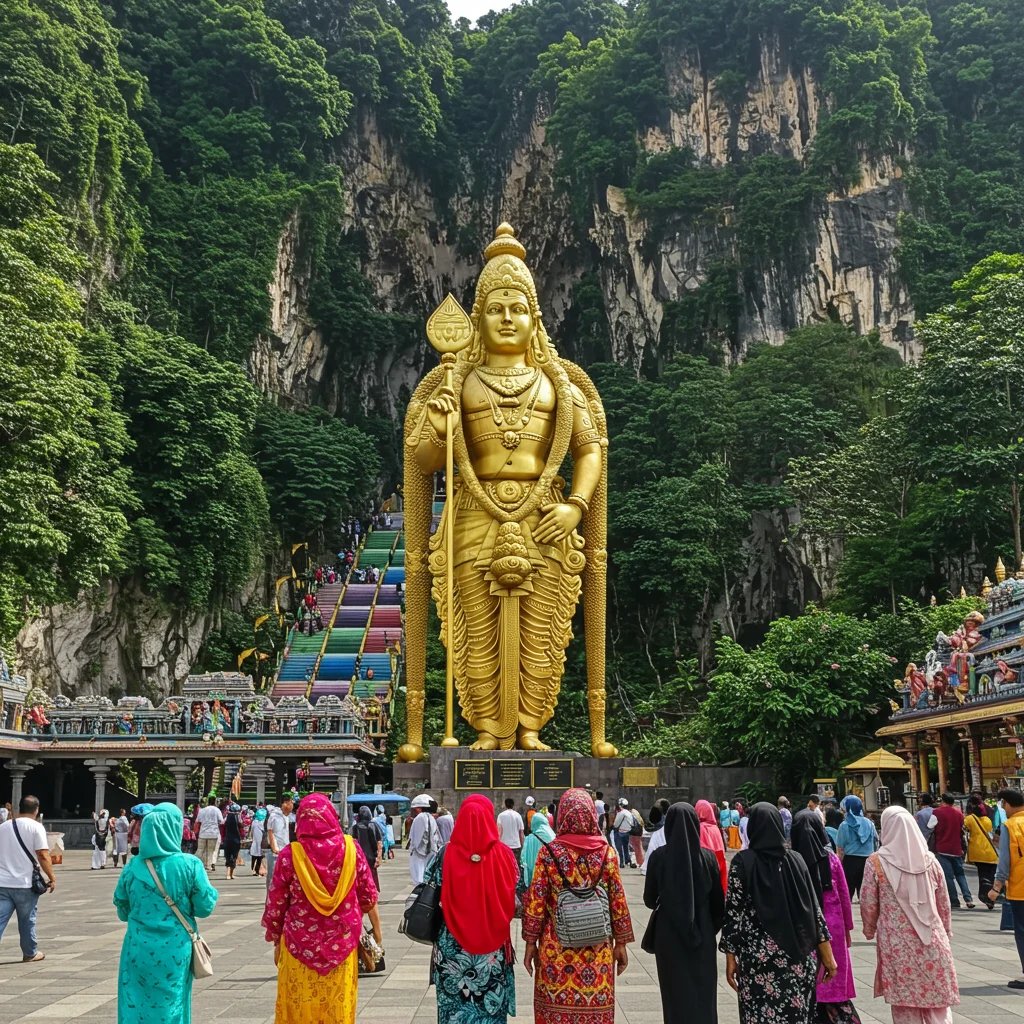
What Is the Dress Code and Cultural Etiquette?
Visitors should wear clothing that covers the shoulders and knees. Long pants or skirts are preferred, and tops should not be sleeveless or low-cut. Sarongs are available for rent at the entrance if needed. Removing shoes before entering temple areas is customary, and a respectful demeanor is appreciated at all times.
Photography is generally allowed, but it’s important to avoid disrupting religious ceremonies or intruding on worshippers’ privacy.
How Can You Stay Comfortable During Your Visit?
Given the tropical climate, light and breathable fabrics are ideal. We suggest bringing a hat, sunglasses, and sunscreen to protect against the midday sun. Carrying a reusable water bottle helps us stay hydrated, especially after climbing the steps.
Comfortable footwear is a must, as the site involves plenty of walking and stair climbing.
What Should You Bring on Your Batu Caves Tour?
Packing the right items can make our visit smoother and more enjoyable. Preparation helps us handle the weather, respect local customs, and capture memorable moments.
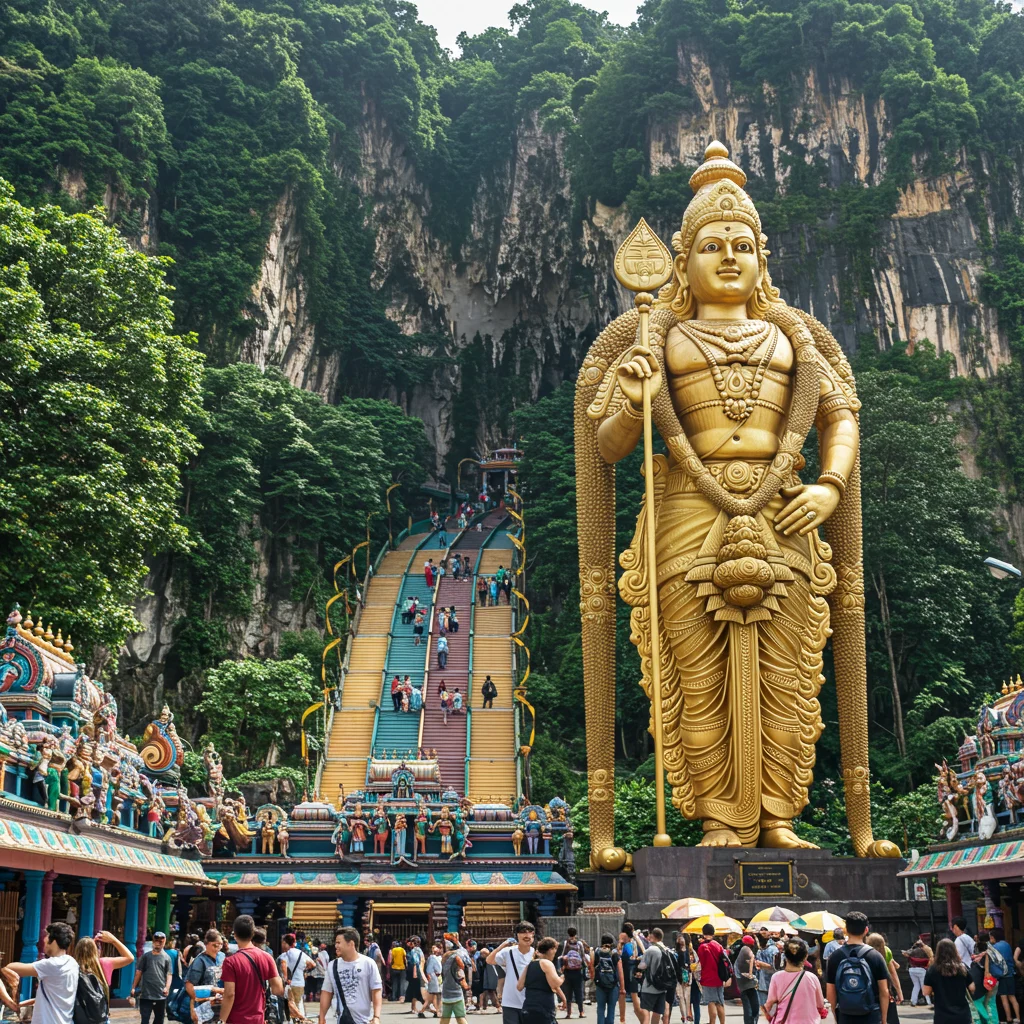
Which Items Are Essential for a Smooth Experience?
- Comfortable clothing and shoes
- Reusable water bottle
- Sun protection (hat, sunglasses, sunscreen)
- Camera or smartphone
- Cash for small purchases and donations
- Light snacks, if desired
- Sarong or scarf for temple areas
Having these essentials on hand ensures we can focus on the experience rather than logistics.
What Are the Best Photography Tips for Batu Caves?
Batu Caves offers endless opportunities for striking photos. Early morning light softens the colors of the staircase and reduces crowds, while late afternoon provides warm, golden tones. Wide-angle lenses capture the scale of the caves and the statue, while close-ups highlight intricate temple details.
Be mindful of worshippers and avoid using flash during ceremonies. The interplay of natural light and shadow inside the caves creates dramatic images that reflect the site’s spiritual atmosphere.
When Is the Best Time to Visit Batu Caves?
Planning our visit for the right time of year and day helps us enjoy Batu Caves to the fullest. Both weather and crowd levels can impact the experience.

How Does the Weather Affect Your Visit?
Kuala Lumpur’s tropical climate means that Batu Caves can be hot and humid year-round. The dry season, typically from May to July, offers more comfortable conditions and clearer skies. Monsoon months (October to March) bring heavier rains, which can make stairways slippery and limit outdoor activities.
We recommend checking the forecast and bringing rain gear if visiting during the wet season.
How Can You Avoid the Crowds?
Batu Caves is busiest on weekends, public holidays, and during major festivals like Thaipusam. Visiting on a weekday morning is the best way to enjoy a quieter atmosphere. Arriving early also means cooler temperatures and better opportunities for photography.
Booking a private tour further enhances the experience by avoiding group tour rushes and customizing the schedule to our preferences.
What Is Thaipusam and Why Is It Celebrated at Batu Caves?
Thaipusam is a major Hindu festival observed by the Tamil community in Malaysia. The celebration honors Lord Murugan and commemorates the triumph of good over evil. Batu Caves becomes the epicenter of festivities, with thousands of devotees carrying offerings and performing acts of devotion.

The festival’s vibrant processions, rhythmic drumming, and colorful attire create an electrifying atmosphere that is both spiritual and visually stunning.
How Can Visitors Experience Thaipusam?
Witnessing Thaipusam at Batu Caves is a rare opportunity to observe faith in action. Visitors can watch devotees undertake pilgrimages, carry kavadis (decorative burdens), and participate in prayers. The energy is palpable, and the sense of community is inspiring.
As experts often say:
“Travel is the only thing you buy that makes you richer.”
This sentiment rings especially true when we witness the dedication and resilience of Thaipusam participants.
What Are the Key Rituals and Processions?
The highlight of Thaipusam is the procession from the Sri Mahamariamman Temple in Kuala Lumpur to Batu Caves. Devotees carry milk pots, pierce their bodies with hooks or skewers, and climb the 272 steps as acts of penance and faith. Traditional music, chanting, and floral decorations fill the air with a sense of celebration and reverence.
How Should Visitors Practice Cultural Sensitivity During Festivals?
During Thaipusam, it’s important for us to be respectful observers. We should avoid obstructing processions, ask permission before taking close-up photos, and dress modestly. Our presence should never interfere with religious activities or the comfort of devotees.
What Wildlife and Nature Can You Encounter at Batu Caves?
Batu Caves is not only a cultural site but also a haven for wildlife and unique plant species. The limestone hills support a diverse ecosystem, offering nature lovers a chance to observe tropical flora and fauna up close.
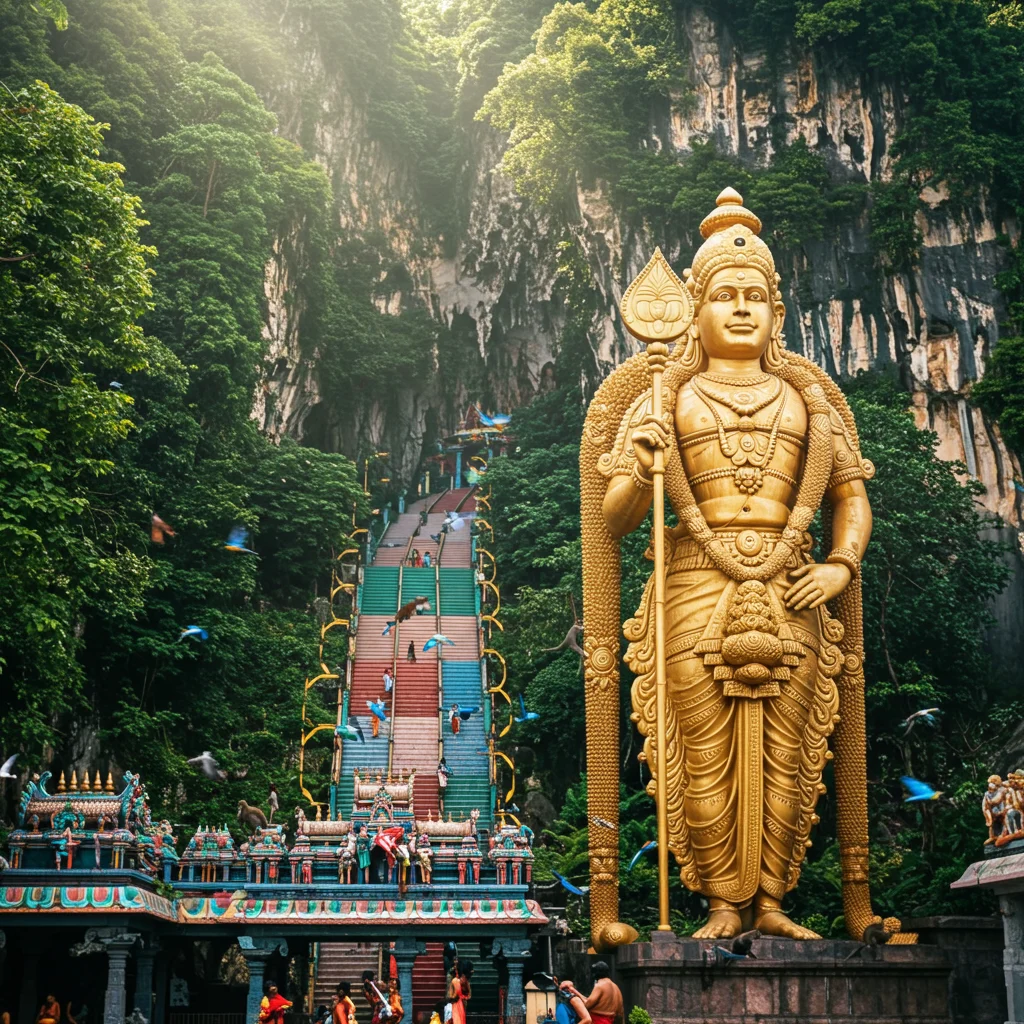
How Should You Interact with the Monkeys?
The resident long-tailed macaques are a familiar sight at Batu Caves. While their antics can be entertaining, we should exercise caution. Feeding monkeys is discouraged, as it disrupts their natural diet and can lead to aggressive behavior. Hold onto personal belongings, as these curious animals are known for snatching bags and snacks.
Maintaining a safe distance and treating the monkeys with respect ensures a positive experience for both visitors and wildlife.
What Flora and Fauna Can Be Found Inside the Caves?
The caves and surrounding area are home to species such as bats, swifts, and rare insects. Unique ferns and mosses thrive in the damp, shaded environment. The Dark Cave, in particular, supports a fragile ecosystem that has evolved over millions of years without sunlight.
Nature walks and guided tours highlight the delicate balance between human activity and the preservation of this biodiversity.
How Are Batu Caves Being Protected Through Conservation and Eco-Tourism?
Efforts to protect Batu Caves are ongoing, with local authorities and environmental groups working together to limit damage from tourism, pollution, and urban development. Conservation programs focus on preserving the caves’ natural features, educating visitors, and supporting sustainable tourism practices.
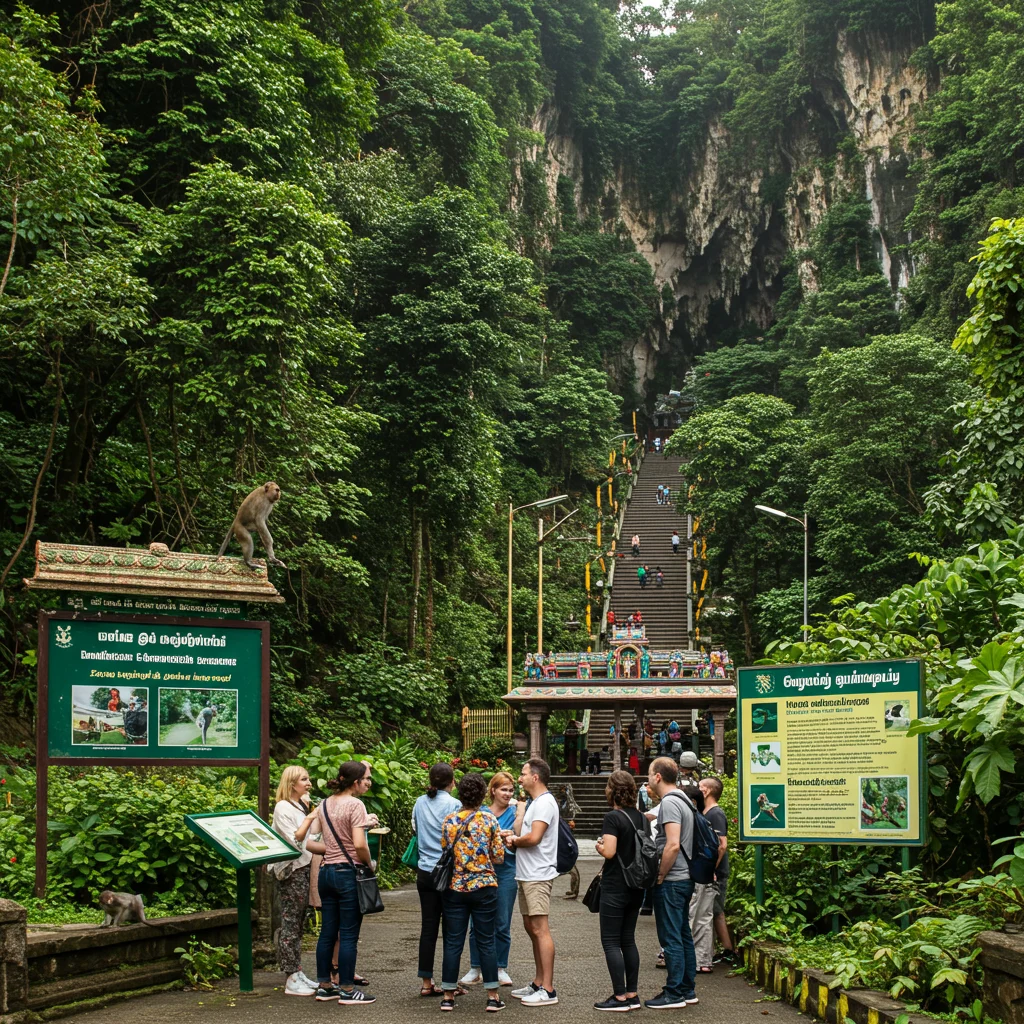
What Conservation Measures Are in Place?
Strict regulations govern activities within sensitive areas such as the Dark Cave. Guided tours limit the number of visitors and provide information about the ecosystem’s fragility. Waste management initiatives and community clean-up events help maintain the site’s cleanliness.
Educational signage throughout the complex raises awareness about the importance of conservation.
What Are Some Responsible Tourism Tips?
- Follow designated paths and respect barriers
- Avoid touching cave formations or disturbing wildlife
- Carry out all litter and use recycling bins
- Support local businesses that prioritize sustainability
- Learn about the site’s history and ecology before visiting
Responsible tourism ensures that Batu Caves remains a vibrant attraction for generations to come. For those interested in eco-conscious travel, similar principles apply in destinations worldwide, such as those highlighted in our article on the Costa Rica Private Tour.
What Can You Learn from a Local Guide at Batu Caves?
A local guide brings Batu Caves to life with stories, legends, and personal insights. Their knowledge helps us appreciate the religious symbolism, historical context, and cultural nuances that might otherwise go unnoticed.

What Are Some Fascinating Stories and Legends?
Guides often share tales of how Batu Caves was chosen as a sacred site, the significance of Lord Murugan’s statue, and the origins of the annual Thaipusam festival. Hearing these narratives adds depth and meaning to our visit, transforming the caves from mere landmarks into living heritage.
How Can You Better Understand Hindu Practices at Batu Caves?
With a guide, we can observe and learn about Hindu rituals, offerings, and prayers. Explanations of temple architecture, iconography, and festival customs foster respect and curiosity. This cultural exchange enriches our understanding and promotes appreciation for Malaysia’s religious diversity.
Which Other Attractions Are Close to Batu Caves?
The area around Batu Caves offers additional sites of interest, providing opportunities to extend our cultural exploration. From traditional villages to historic temples, the neighborhood reflects the broader tapestry of Malaysian society.
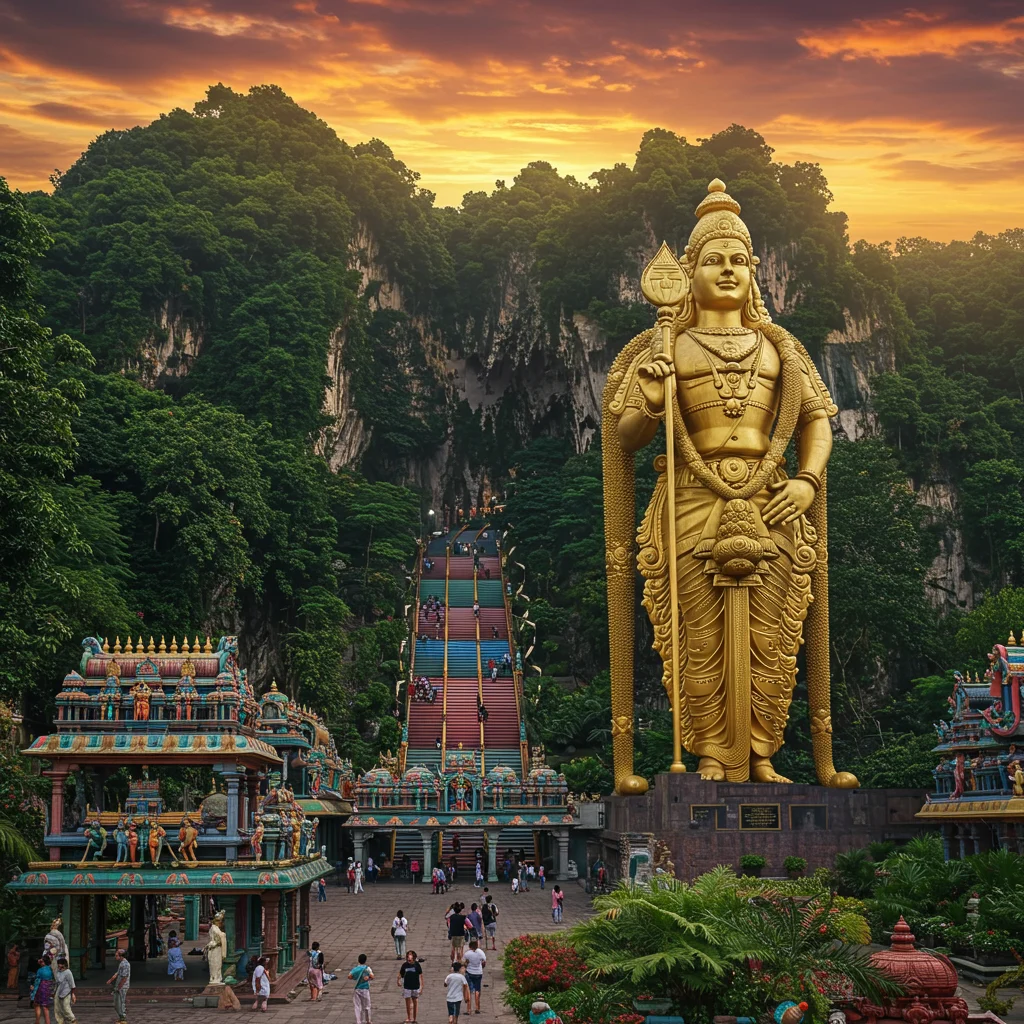
What Can You Find in Batu Caves Village?
The adjacent village features local markets, food stalls, and small shops selling religious items. Wandering through the village gives us a glimpse into daily life and allows us to interact with residents and artisans.
Which Nearby Temples and Cultural Sites Are Worth Visiting?
Several smaller temples and shrines dot the area, each with its own charm and history. The Sri Venkatachalapathi & Alamelu Temple and the Sri Subramaniar Swamy Temple are notable for their colorful architecture and welcoming atmosphere. Exploring these sites deepens our appreciation for the region’s religious diversity.
Where Can You Shop for Souvenirs Around Batu Caves?
Shopping at Batu Caves is a chance to bring home meaningful mementos and support local artisans. Stalls and shops line the entrance and nearby streets, offering a variety of items.

What Should You Buy and Where?
Popular souvenirs include miniature Lord Murugan statues, prayer beads, incense, and decorative sarongs. Many stalls also sell traditional sweets and snacks, perfect for sharing with friends and family. Prices are generally reasonable, but polite bargaining is customary.
What Local Handicrafts and Religious Items Are Available?
Handcrafted jewelry, wooden carvings, and batik textiles showcase the skill and creativity of local artists. Purchasing these items not only provides a lasting memory of our visit but also supports the community’s cultural heritage.
Where Can You Eat Near Batu Caves?
After exploring the caves, we can enjoy a meal at one of the many restaurants and food stalls in the area. Malaysian cuisine is known for its bold flavors and diverse influences, making dining near Batu Caves a highlight of the trip.
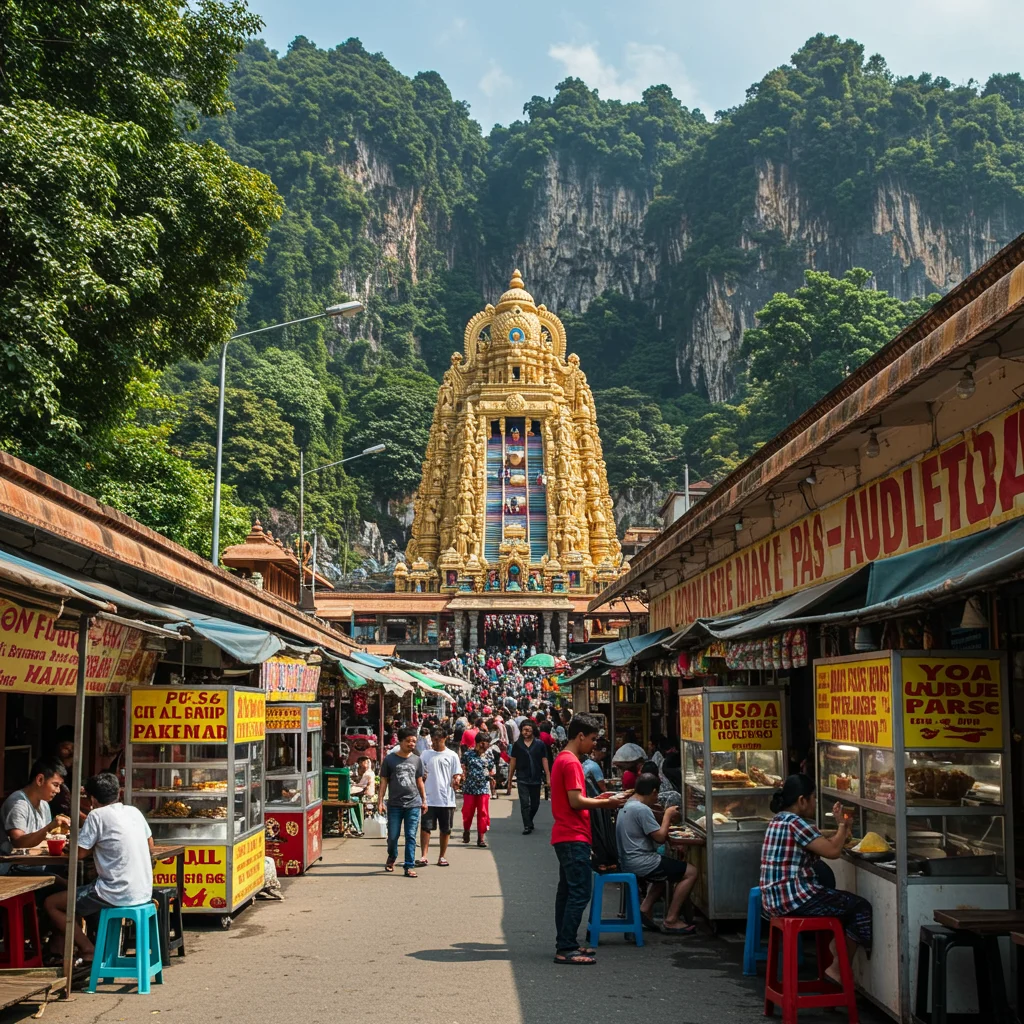
Which Local Restaurants and Street Food Should You Try?
Nearby eateries serve a range of dishes, from banana leaf rice and spicy curries to freshly made roti canai and teh tarik (pulled tea). Street vendors offer quick bites like samosas, vadai, and sweet desserts. The vibrant aromas and lively atmosphere add to the sensory experience.
Are There Vegetarian and Halal Options?
Many restaurants near Batu Caves cater to vegetarian and halal diets, reflecting the area’s religious diversity. South Indian vegetarian meals are especially popular during festivals, while halal-certified eateries provide options for Muslim visitors. Asking staff about ingredients ensures that dietary needs are met.
How Should You Plan Your Day for a Batu Caves Private Tour?
Creating a thoughtful itinerary allows us to make the most of our time at Batu Caves. Balancing temple visits, nature walks, and cultural activities ensures a rewarding experience.

What Are Suggested Timings and Activities?
- 8:00 AM – Arrive early to beat the heat and crowds
- 8:30 AM – Climb the 272 steps and explore the Temple Cave
- 10:00 AM – Join a guided tour of the Dark Cave
- 11:30 AM – Visit the Ramayana Cave and Cave Villa
- 12:30 PM – Enjoy a local lunch nearby
- 1:30 PM – Shop for souvenirs or explore the village
- 2:30 PM – Combine with another Kuala Lumpur highlight, such as the National Mosque or Central Market
Flexibility is key, and private tours can adjust the schedule to match our interests and energy levels.
How Can You Combine Batu Caves with Other Kuala Lumpur Highlights?
Many private tours offer combined itineraries that include other renowned sites in the city. We might visit the Petronas Towers, thean Hou Temple, or Merdeka Square in the same day. This approach maximizes our time and showcases the best of Kuala Lumpur’s heritage—an approach similar to those offered in our Kyoto & Nara Day Tour coverage.
What Facilities and Accessibility Options Are Available at Batu Caves?
Batu Caves is equipped with amenities and services to accommodate visitors’ needs. Understanding the available facilities helps us plan a comfortable and enjoyable outing.
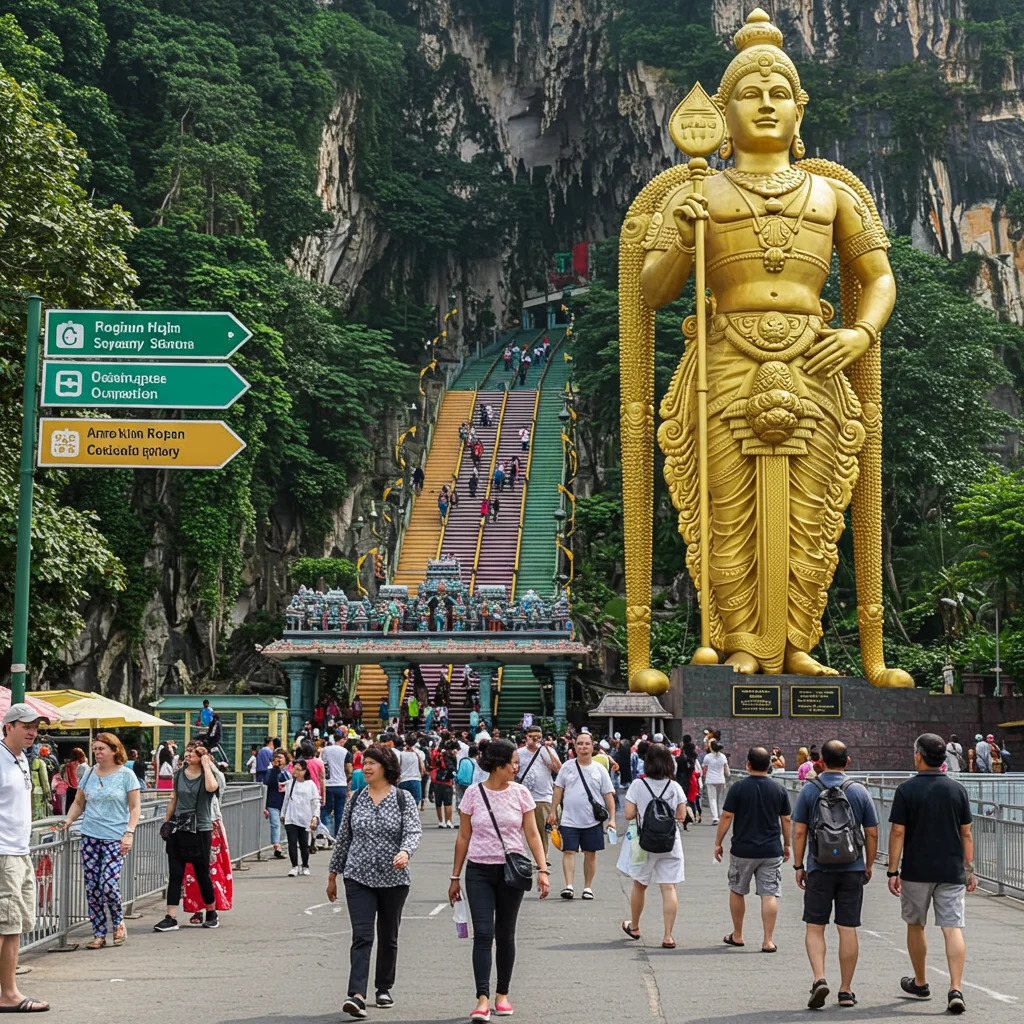
Where Can You Find Parking, Restrooms, and Visitor Services?
Parking is available on-site for a modest fee, and staff are present to assist with directions. Restrooms are located near the entrance and throughout the complex. Visitor information centers provide maps, brochures, and assistance in multiple languages.
Shaded areas and benches offer spots to rest, particularly after climbing the steps.
Is Batu Caves Wheelchair Friendly?
The main plaza and lower temple areas are accessible to wheelchair users, but the 272 steps to the Temple Cave are not. Some parts of the complex, such as the Ramayana Cave and Cave Villa, may be accessible, but uneven terrain and steep slopes can present challenges. We suggest contacting tour providers in advance to discuss specific needs and available accommodations.
What Safety Tips Should You Keep in Mind When Visiting Batu Caves?
Staying safe at Batu Caves involves preparing for the physical demands of the site, respecting wildlife, and knowing how to respond to emergencies.
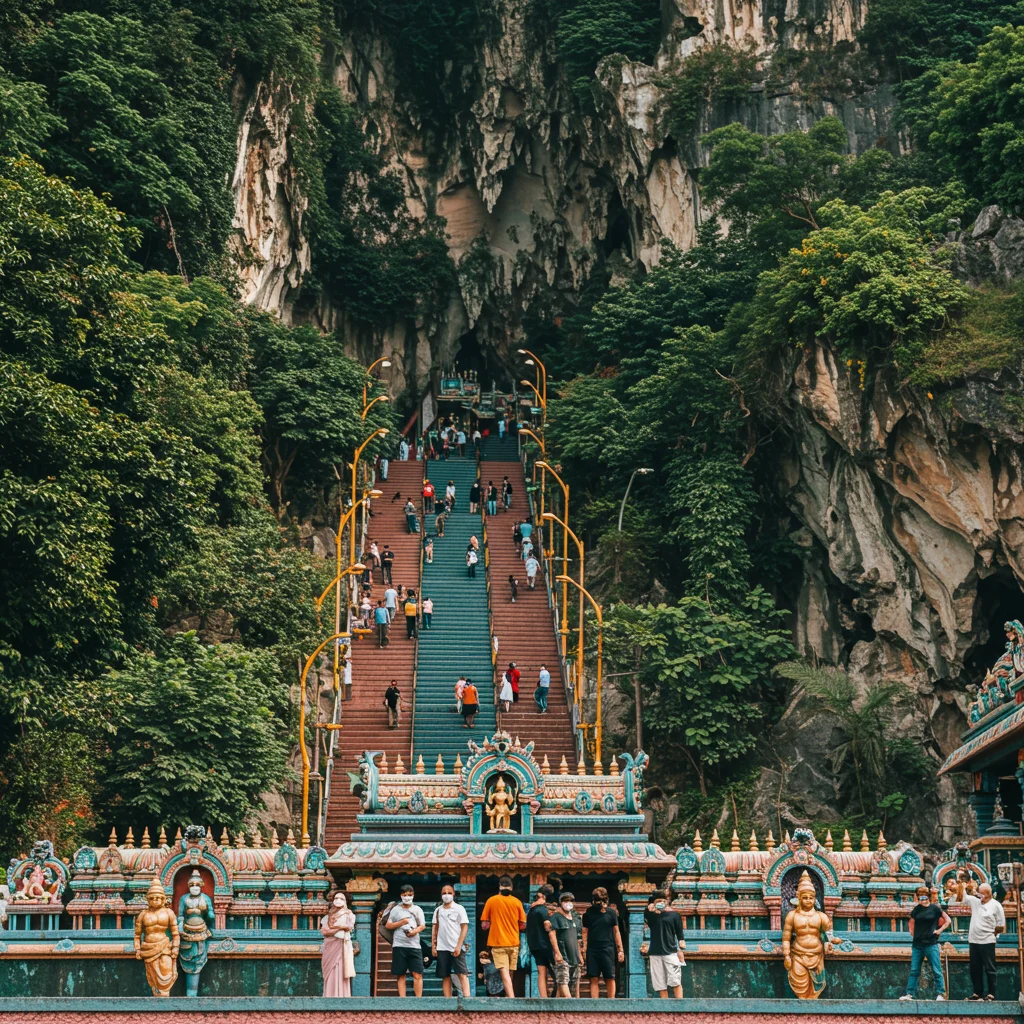
What Health Precautions and Emergency Contacts Should You Know?
We recommend bringing necessary medications, using hand sanitizer, and staying hydrated. In case of injury or health issues, first aid stations and security personnel are available on-site. The nearest hospital is just a short drive away, and emergency contact numbers are posted at key locations.
How Can You Manage Heights and Steps Comfortably?
If we have concerns about heights or stair climbing, taking regular breaks and moving at a steady pace helps. The steps are equipped with railings, and shaded landings provide rest spots. Visitors with mobility issues may wish to focus on accessible areas and enjoy the cultural atmosphere from ground level.
What Are the Most Common Questions About Batu Caves Tours?
Travelers often ask about the value, duration, and logistics of a private tour to Batu Caves. Here are some frequently raised topics.
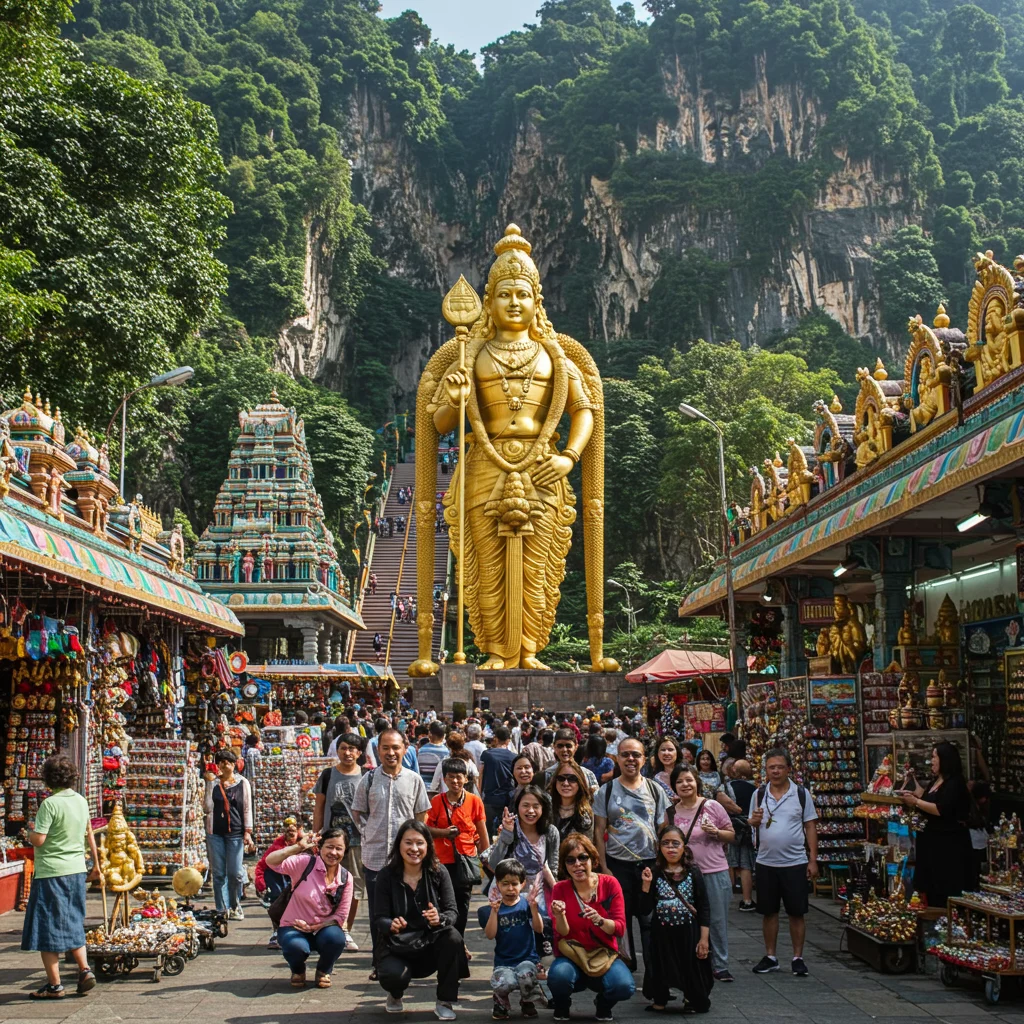
Is a Private Tour Worth It for Families?
Absolutely. Private tours cater to families by offering flexibility, personalized attention, and the ability to pace the day according to children’s needs. Guides can adjust activities, recommend kid-friendly attractions, and ensure a stress-free experience for all ages.
How Much Time Should You Spend at Batu Caves?
We recommend allocating at least half a day (4–5 hours) to fully appreciate Batu Caves. This allows time for climbing the steps, exploring the caves, enjoying a meal, and shopping for souvenirs. Combining the visit with other city highlights may extend the itinerary to a full day.
For inspiration on crafting the perfect sightseeing day, see our advice in the Athens Essentials: Acropolis & Parthenon Guided Tour article.
How to Book on Viator
Booking your Batu Caves private tour is simple and secure through Viator, a trusted platform for travel experiences. We can find tours tailored to our interests, compare reviews, and choose from a variety of options that include transportation, guides, and extra activities.

To plan your trip or book activities, visit the Viator website and search for Batu Caves tours. The booking process is user-friendly, with clear descriptions, pricing, and instant confirmation for most experiences.
Conclusion: How Can You Make the Most of Your Batu Caves Experience?
Visiting Batu Caves on a private tour allows us to engage deeply with Malaysia’s cultural and spiritual landscape. From the vivid colors of the staircase to the sacred rituals inside the caves, every moment offers a new perspective and lasting memory. By planning ahead, respecting local customs, and choosing the right tour provider, we can enjoy a fulfilling and meaningful journey.

For more travel inspiration and expert tips, explore the resources on Izase at izase.com. We wish you a safe and memorable adventure at Batu Caves!
Disclaimer: This information is accurate to the best of our knowledge; however, there may be changes or mistakes. Please verify exact details on the Viator booking page.

